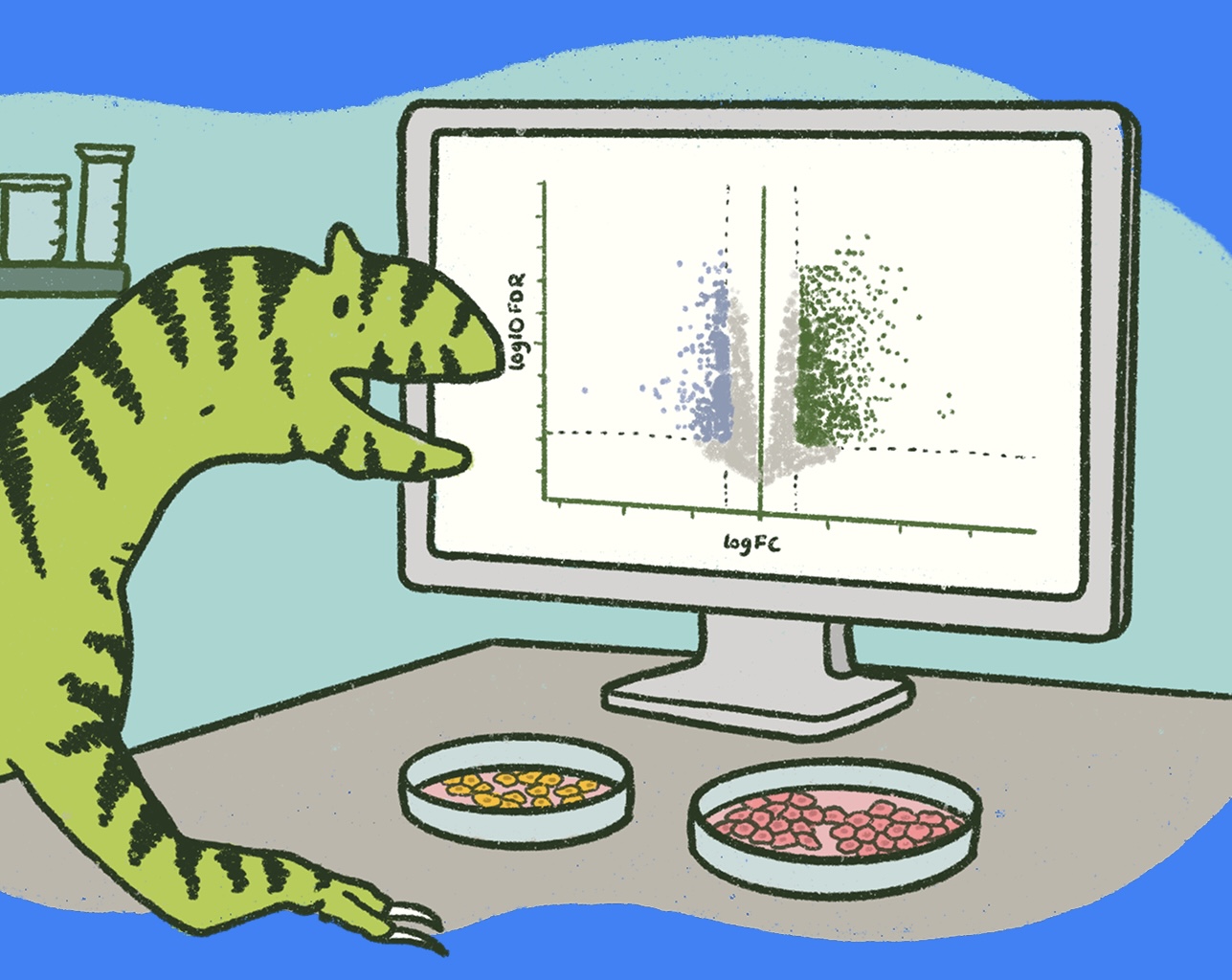Re-introducing CRISPR: The Google Search of the genome
This story is brought to you by Mammoth Biosciences, whose researchers are building a CRISPR-based platform for an endless variety of tests for bio sensing in healthcare, agriculture, manufacturing, forensics, and more. Learn more at mammoth.bioWhile CRISPR continues to make headlines about editing the human genome, an equally important effort is quietly underway-- potentially revolutionizing diagnostic medicine by making rapid disease detection available virtually everywhere.Mammoth Biosciences is a leader in this endeavor. Mammoth’s founders, Trevor Martin, Ashley Tehranchi, Janice Chen and Lucas Harrington, were graduate students thinking broadly about how to create better diagnostics when CRISPR hit. When they heard about it, they knew immediately that this was the technology that would change diagnostics forever.
“This could be the first major use of CRISPR,” Martin says, “and far more ubiquitous than gene editing applications.”
CRISPR is an ancient bacterial immune system. It uses Cas (CRISPR-associated) proteins to locate and cut genetic sequences. When a virus invades a bacterial cell, its CRISPR defense system uses Cas proteins to cut the viral DNA, thereby deactivating it. Repurposing this system in humans to cut and replace sequences holds enormous potential for therapeutic medicine. But modifying the genome carries inherent risks.
“Off-target complications, in vivo delivery challenges, and bioethics are naturally big concerns with emerging CRISPR gene editing applications,” says Martin. “Our diagnostics are ex vitro, so these challenges don’t prevent us from making a useful product now.”
The Mammoth team built their San Francisco start-up with technology exclusively licensed from Jennifer Doudna’s lab at Berkeley. Doudna, who is also a co-founder of Mammoth, was a leader of the team who discovered Cas9’s capacity to make double-stranded breaks in DNA.

The Mammoth Biosciences’ co-founders hope to use CRISPR to revolutionize diagnostic medicine. From left: Chief Discovery Officer Lucas Harrington, CEO Trevor Martin, CTO Ashley Tehranchi, Chair of Scientific Board Jennifer Doudna, Chief Research Office Janice Chen.Cas9 isn’t CRISPR’s only useful protein. Other Cas proteins have the ability, given the right programming, to “Google search” DNA. Mammoth uses these search capabilities to discover and diagnose diseases. Mammoth’s system builds on Doudna’s breakthrough, focusing instead on Cas12 and Cas13. It begins with the same processes as the Cas9 system, using a molecule called guide RNA (gRNA, which was simplified and re-engineered by Doudna’s team) to find a genetic sequence. The Cas protein (Cas12 for DNA or Cas13 for RNA) confirms that the gRNA has found the correct sequence. Using these proteins, Mammoth’s technology can “sense virtually any type of nucleic acid” in the body. As more genetic biomarkers are established, the library of possible “search terms” grows. The more sequences CRISPR complexes can be programmed to find, the more valuable and effective the system becomes.
Related: Jennifer Doudna to advise CRISPR start-up Synthego
Confirming that a Cas protein has matched with the target sequence normally takes laboratory-grade equipment. To make their technology easier and more cost-effective, the Mammoth team introduced a reporter molecule. When Cas locates the target sequence, it breaks apart the reporter molecule, causing the molecule to change color. When enough reporter molecules are broken, the color becomes visible to the human eye, thus confirming the target sequence’s presence in the sample. This simple method allows for results to be interpreted at point-of-care.

“Our goal is a diagnostic the size of a pregnancy test,” says Martin. “You wouldn’t need lab equipment or technicians to interpret the results.”
Another virtue of bypassing a lab is speed. In disease diagnostics, a delay of even an hour could cost lives. Mammoth’s tests take as 30 minutes or less. These expedited results can, of course, improve patient care. But they could also play an important role in slowing or even containing highly contagious outbreaks like Zika or H1N1.The straightforward nature of Mammoth’s technology means their tests aren’t limited to hospital or point-of-care use. The company is developing a paper-based test, not unlike a home pregnancy test. Smartphones are able to further increase sensitivity and accuracy by detecting color changes in water-based samples.

At-home testing has other benefits, including containing infections, reducing costs, and cutting clinic and laboratory wait times. Home tests can also reduce the number of doctors a patient may need to see. Instead of going from one specialist to the next, searching for a diagnosis, these tests can help patients reach the right doctor the first time.
Related: Humanitarian Diagnostics Startup Helispot Takes Home First-Ever IDT Synthetic Biology Grant Award
Additionally, the form factor of the paper-based tests makes them highly scalable. Test cards could be rapidly deployed to outbreak cites or disaster areas. They could also assist developing nations in providing more reliable access to diagnostic care.
“Our platform is easily modified to detect new and emerging diseases,” Martin says.
Combined with its field deployability and quick reporting time, the Mammoth platform is promising as a health security solution.

Diagnostic selfies: Mammoth envisions using your smartphone to aid in detecting color changes in its paper-based diagnostic platform, then uploading the results to your doctor. Photo courtesy of Mammoth Biosciences.The Mammoth team isn’t confining their vision to healthcare. Their technology has applications in agriculture, environmental sciences, forensics genotyping and even counter-bioterrorism.
“Because of its flexibility,” Martin says, “CRISPR-based detection can be used across many industries. We are at the very beginning of what we can do.”
When the gene-editing possibilities of CRISPR were introduced to the world, the stuff of science-fiction became science-real. But just how CRISPR makes its initial impact may surprise and awe us all.Trevor Martin will be speaking at SynBioBeta 2018: The Global Synthetic Biology Summit in San Francisco, October 1–3, Part of Synthetic Biology Week. Early bird registration ends on July 27th. This story is brought to you by Mammoth Biosciences, whose researchers are building a CRISPR-based platform for an endless variety of tests for bio sensing in healthcare, agriculture, manufacturing, forensics, and more. Learn more at mammoth.bio.




.svg)










-min.png)
.gif)